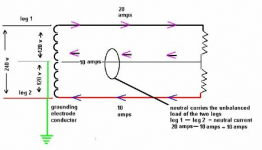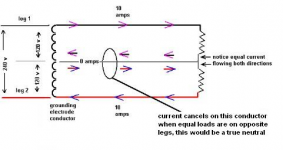We have a 1200-amp service being installed with 4x parallel 4-inch pvc conduits. We will be installing brown, orange, yellow, gray 600 mcm aluminum conductors with a 250 ground in each conduit. The derating because of 4 current carrying conductors in each conduit is the reason for the 600 sizes.
The question is because the breaker only has lugs for 4x 500 mcm conductors and they do not have a 4-hole lug kit for 600s.
We are feeding into the side of the existing gear from a 2 ft x 4 ft 3r box from underground. It is about 15 ft through the gear to the breaker location, all fairly open. I see a few options.
1. use reducing pins on the 600 conductors to make the pins fit the breaker. This may not work because the pins may interfere with the mounting of the breaker. Like everything right now nothing is here to try it out. Once the breaker arrives, if I can get a couple of pins, I would know for sure, I think. The problem is we are going to have to shut the gear down to install the breaker and this shuts down a facility running 24/7. We don't have the luxury of something not working.
2. use Polaris lugs for each conductor adapting from 600 aluminum to 300 copper or 400 aluminum inside the 2x4 can and run the 300/400 through the open gear to the breaker. This would look like hammered crap in the can, and is it possible to derate the conductors since they are no longer in the conduit and are now running through the gear?
3. use 8-hole Polaris lugs in the 2x4 can and adapt from the 4 x 600 aluminum to 4 x 300 copper conductors or 4 x 400 aluminum conductors and route those through the gear. This would look considerably better, but is it legal? Is the derating only taken into account in the conduit run and I can reduce the wire size once in the gear?
Thak you guys. Any other options I have not thought of besides quitting and going to work elsewhere?
The question is because the breaker only has lugs for 4x 500 mcm conductors and they do not have a 4-hole lug kit for 600s.
We are feeding into the side of the existing gear from a 2 ft x 4 ft 3r box from underground. It is about 15 ft through the gear to the breaker location, all fairly open. I see a few options.
1. use reducing pins on the 600 conductors to make the pins fit the breaker. This may not work because the pins may interfere with the mounting of the breaker. Like everything right now nothing is here to try it out. Once the breaker arrives, if I can get a couple of pins, I would know for sure, I think. The problem is we are going to have to shut the gear down to install the breaker and this shuts down a facility running 24/7. We don't have the luxury of something not working.
2. use Polaris lugs for each conductor adapting from 600 aluminum to 300 copper or 400 aluminum inside the 2x4 can and run the 300/400 through the open gear to the breaker. This would look like hammered crap in the can, and is it possible to derate the conductors since they are no longer in the conduit and are now running through the gear?
3. use 8-hole Polaris lugs in the 2x4 can and adapt from the 4 x 600 aluminum to 4 x 300 copper conductors or 4 x 400 aluminum conductors and route those through the gear. This would look considerably better, but is it legal? Is the derating only taken into account in the conduit run and I can reduce the wire size once in the gear?
Thak you guys. Any other options I have not thought of besides quitting and going to work elsewhere?



